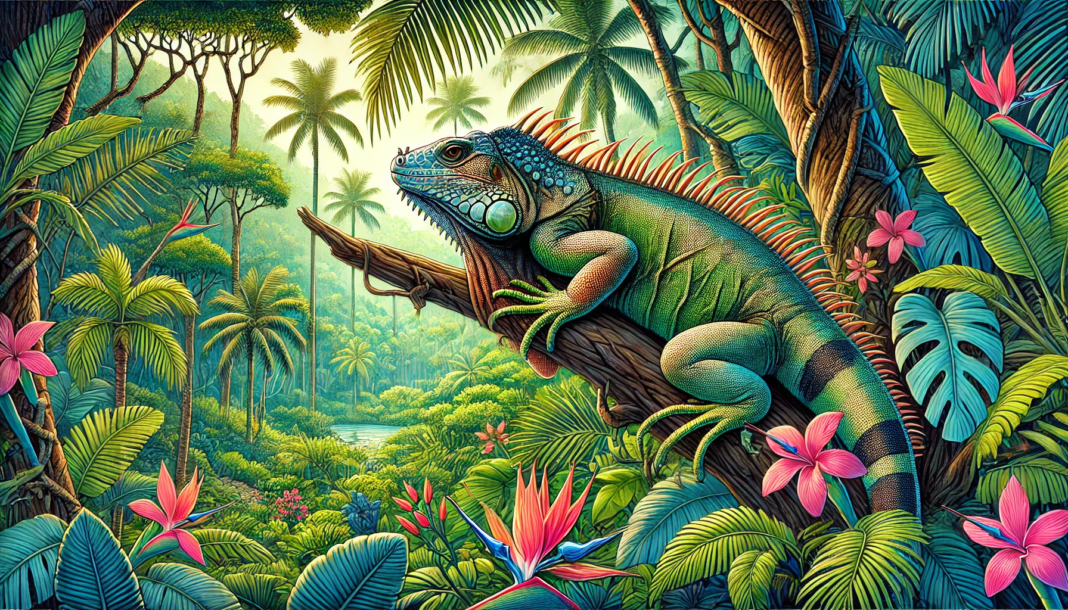The Caribbean’s rich biodiversity is under significant threat from invasive species. These non-native organisms, introduced either intentionally or accidentally, can have devastating effects on local ecosystems and native species.
Invasive species often outcompete native species for resources, disrupt habitats, and alter ecological processes, leading to biodiversity loss and ecological imbalance.
This article explores the impact of some of the most notorious invasive species in the Caribbean and their effects on the region’s delicate ecosystems.
Major Invasive Species in the Caribbean
1. Lionfish (Pterois volitans and Pterois miles)
Lionfish, native to the Indo-Pacific, have become one of the most well-known invasive species in the Caribbean. They are highly predatory and have few natural predators in the region, allowing their populations to grow rapidly. Lionfish consume a wide variety of small fish and invertebrates, significantly impacting reef fish populations and disrupting the balance of coral reef ecosystems. Their presence has led to a decline in the abundance of native fish species, including those that are vital for maintaining healthy reef structures.
2. Green Iguana (Iguana iguana)
Originally from Central and South America, the green iguana has established populations in several Caribbean islands, including Puerto Rico, the Cayman Islands, and the Virgin Islands. Green iguanas are herbivorous and can cause significant damage to native vegetation, including crops and ornamental plants. They compete with native species for food and habitat and can disrupt local ecosystems by altering plant communities.
3. Small Indian Mongoose (Herpestes javanicus)
Introduced to the Caribbean in the 19th century to control rat populations in sugarcane fields, the small Indian mongoose has become a major invasive predator. Mongooses are opportunistic feeders and have had severe impacts on native wildlife, particularly ground-nesting birds, reptiles, and small mammals. Their predation has led to the decline and extinction of several endemic species, including the Jamaican petrel and various reptiles.
4. Feral Pigs (Sus scrofa)
Feral pigs, descendants of domesticated pigs introduced by European settlers, are found on many Caribbean islands. They are highly adaptable and can thrive in various habitats. Feral pigs are omnivorous and can cause extensive damage to ecosystems by rooting and trampling vegetation, preying on native animals, and competing with native herbivores. Their feeding behavior leads to soil erosion, water contamination, and the spread of invasive plant species.
5. Asian Green Mussel (Perna viridis)
The Asian green mussel, a bivalve mollusk native to the Indo-Pacific, has established populations in Caribbean coastal waters. These mussels attach to surfaces in large numbers, including boats, docks, and underwater structures, causing economic and ecological problems. They outcompete native bivalves for space and food, potentially altering local marine ecosystems and impacting commercial shellfish industries.
Ecological and Economic Impacts
Biodiversity Loss
Invasive species often outcompete native species for resources such as food, habitat, and space. This competition can lead to the decline or extinction of native species, reducing biodiversity. The loss of native species disrupts ecosystem functions, such as pollination, seed dispersal, and nutrient cycling, which can have cascading effects on the entire ecosystem.
Habitat Destruction
Invasive species can alter habitats, making them unsuitable for native species. For example, feral pigs and green iguanas can cause extensive damage to vegetation, leading to habitat loss for other species. The rooting behavior of feral pigs can also cause soil erosion and degradation, affecting water quality and availability.
Economic Costs
The economic impact of invasive species in the Caribbean is significant. They can damage agriculture, fisheries, and tourism industries. For instance, the lionfish invasion has affected local fisheries and reef tourism by reducing the abundance of commercially valuable fish species. The cost of managing and controlling invasive species, as well as the economic losses due to their impacts, is substantial.
Conservation and Management Efforts
Efforts to manage and control invasive species in the Caribbean include prevention, early detection, rapid response, and long-term management. Strategies such as public education, legislation, and international cooperation are crucial in preventing the introduction and spread of invasive species. Eradication programs, such as the removal of lionfish from marine reserves and the control of mongoose populations, are being implemented in various islands.
Restoration of native species and habitats is also an essential part of the conservation efforts. This includes reintroducing native species, restoring degraded habitats, and protecting areas critical for the survival of endangered species.
Conclusion
The impact of invasive species on the Caribbean’s ecosystems and native species is profound. These species threaten the region’s biodiversity, disrupt ecological processes, and cause significant economic losses. Addressing the issue requires coordinated efforts at local, national, and international levels. Through effective management and conservation strategies, it is possible to mitigate the effects of invasive species and protect the Caribbean’s unique natural heritage.
Frequently Asked Questions
What are some examples of invasive species in the Caribbean?
Examples of invasive species in the Caribbean include the lionfish, green iguana, small Indian mongoose, feral pigs, and the Asian green mussel. These species have been introduced to the region through human activities and have caused significant ecological and economic impacts.
How do invasive species impact native species in the Caribbean?
Invasive species impact native species by competing for resources, preying on them, and altering their habitats. This competition can lead to the decline or extinction of native species, disrupting ecosystem functions and reducing biodiversity.
What measures are being taken to control invasive species in the Caribbean?
Measures to control invasive species in the Caribbean include prevention through public education and legislation, early detection and rapid response, eradication programs, and habitat restoration. International cooperation and coordination are also essential for effective management.
Why are lionfish considered a significant threat to Caribbean reefs?
Lionfish are considered a significant threat to Caribbean reefs because they are voracious predators that consume a wide range of reef fish and invertebrates. With few natural predators in the region, their populations can grow rapidly, leading to the decline of native fish species and disrupting the balance of coral reef ecosystems.
How can the public help in managing invasive species in the Caribbean?
The public can help manage invasive species by reporting sightings of invasive species, participating in removal programs, adhering to regulations that prevent the introduction of non-native species, and raising awareness about the impacts of invasive species on local ecosystems.
What are the economic impacts of invasive species in the Caribbean?
Invasive species can cause significant economic impacts by damaging agriculture, fisheries, and tourism industries. They can reduce the abundance of commercially valuable species, degrade natural habitats, and increase the costs associated with managing and controlling invasive populations.

